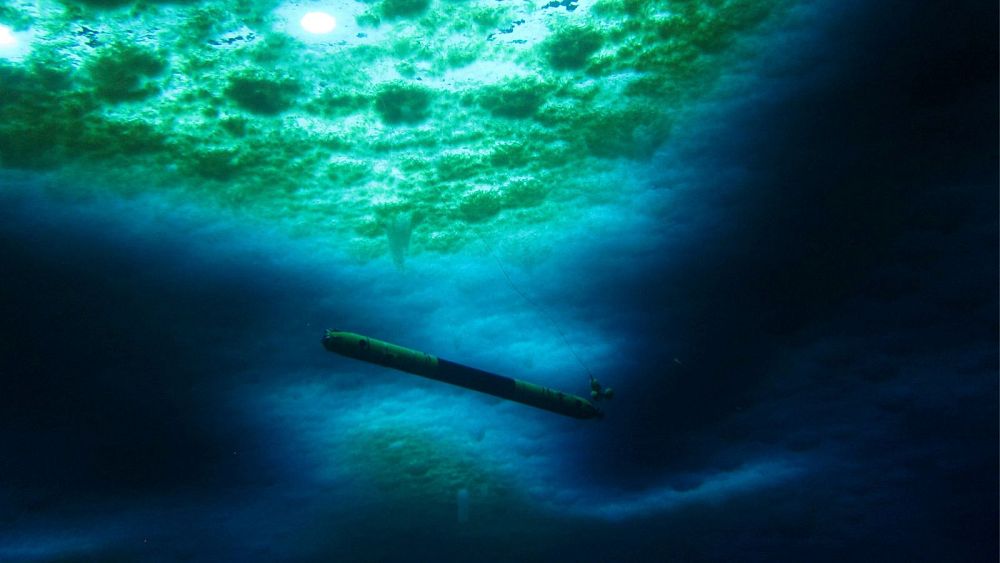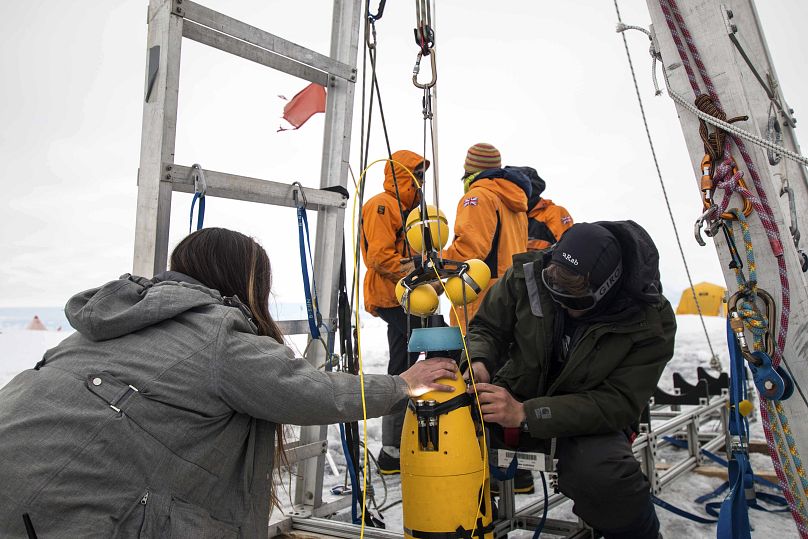
Scientists have got their first close look at what’s eating away at the world’s widest glacier.
A pencil-shaped robot was used to approach Antarctica’s Thwaites ice shelf, nicknamed the ‘Doomsday Glacier’ because of its massive melt and sea rise potential.
The four-metre-long device swam past the grounding line where the ice meets the sea to a ‘shimmering’ spot under Thwaites. At this point, “it’s melting so quickly, there’s just material streaming out of the glacier,” says polar scientist Britney Schmidt.
Before, scientists had no observations from this critical part of Thwaites, an ice giant roughly the size of Florida. It could cause seas to rise by 65 centimetres if it all melts — though that’s unlikely to happen for hundreds of years.
But with the ‘Icefin’ robot lowered down a 587-metre hole, they saw how important crevasses are in the fracturing of the ice. This takes the heaviest toll on the glacier, even more so than melting.
“That’s how the glacier is falling apart. It’s not thinning and going away. It shatters,” says Schmidt from Cornell University, lead author of one of two new studies published in the journal Nature.
The International Thwaites Glacier collaboration — a €47 million multi-year international research effort — has got both good and bad news from its latest expedition.
How fast is the Thwaites Glacier melting?
The melting of Thwaites is dominated by what’s happening underneath, where warmer water nibbles at the bottom.
The researchers watched this warmer water making its way into crevasses and other openings known as terraces, causing sideways melt of 30 metres or more per year.
«Warm water is getting into the weakest parts of the glacier and making it worse,» Schmidt says. «That is the kind of thing we should all be very concerned about.”
The other paper’s findings showed about five metres per year of melt near the glacier’s grounding line. That’s less than what the most aggressive thinning models previously predicted.
Why is glacier retreat worse than melting?

So, the good news: Much of the flat underwater area the scientists explored is melting much slower than they expected.
The bad news: That doesn’t really change how much ice is coming off the land part of the glacier and driving up sea levels, says Peter Davis, an oceanographer at British Antarctic Survey.
Glacier retreat is a much bigger problem than melting, he explains. The more the glacier breaks up or retreats, the more ice floats in water. This ice adds to the overall water level by displacement, just as ice added to a glass of water raises water level.
And more bad news: This is from the eastern, larger and more stable part of Thwaites.
Researchers couldn’t safely land a plane and drill a hole in the ice in the main trunk, which is breaking up much faster. The surface over there “is so messed up by crevasses it almost looks like a set of sugar cubes,” says Paul Cutler, the Thwaites programme director for the National Science Foundation.
Though it’s an incomplete picture, Ted Scambos of the National Snow and Ice Data Center says the results add to our understanding of how Thwaites is diminishing.
“Unfortunately, this is still going to be a major issue a century from now,” he says. “But our better understanding gives us some time to take action to slow the pace of sea level rise.”
Scientists find sea anemones under Thwaites
When the skinny robot wended its way through the hole in the ice — made by a jet of hot water — the cameras showed not just the melting water, the crucial crevasses and seabed. It showed critters, especially sea anemones, swimming under the ice.
“To accidentally find them here in this environment was really, really cool,” Schmidt says. “We were so tired that you kind of wonder like, ‘am I really seeing what I’m seeing?’ You know because there are these little creepy alien guys (the anemones) hanging out on the ice-ocean interface.
“In the background is like all these sparkling stars that are like rocks and sediment and things that were picked up from the glacier,” Schmidt adds. “And then the anemones. It’s really kind of a wild experience.”
